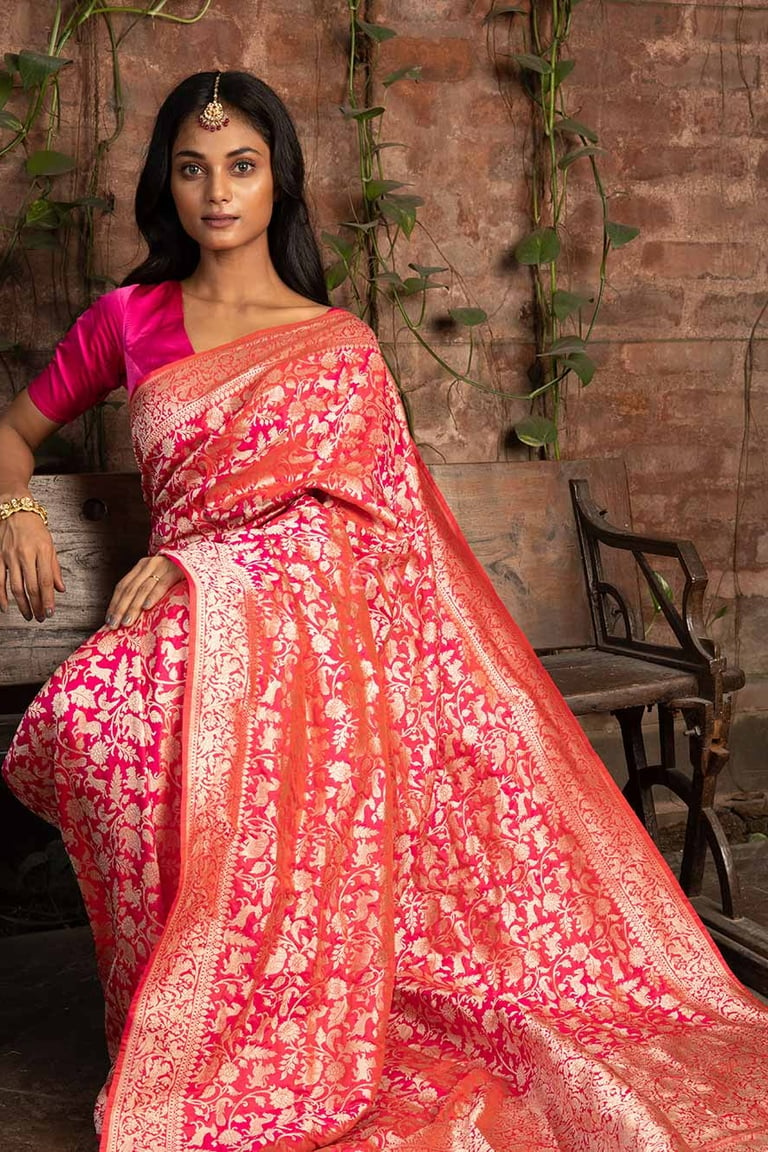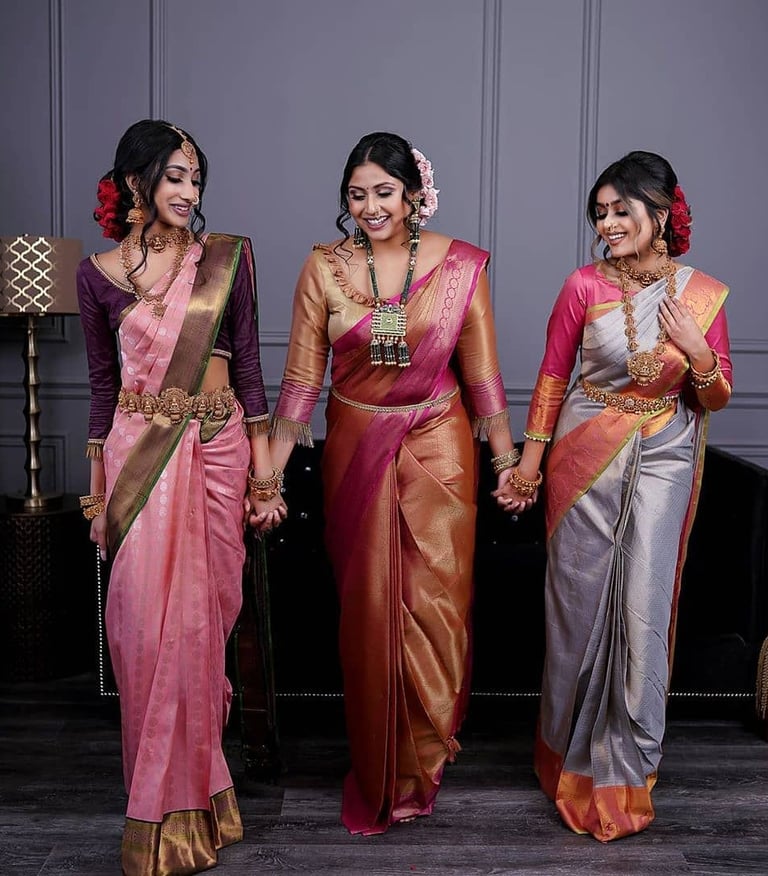Indian Sarees: A Celebration of Tradition and Elegance
Find the most trending indian sarees series which is live in every women heart
5/9/20243 min read


Indian Sarees: A Celebration of Tradition and Elegance
India is a land of diverse cultures and traditions, each with its unique style of clothing. Among the many traditional garments, the saree holds a special place in the hearts of Indian women. With its timeless beauty and elegance, the saree has been an integral part of Indian fashion for centuries. In this blog post, we will explore some of the most popular types of Indian sarees and their significance.
Banarasi Saree: A Testament to Indian Craftsmanship
When it comes to Indian sarees, the Banarasi saree is a true masterpiece. Originating from the city of Varanasi in Uttar Pradesh, these sarees are known for their intricate brocade and embroidery work. The Banarasi saree is a symbol of opulence and luxury, often adorned with gold and silver threads. The motifs on these sarees are inspired by Mughal art and architecture, making them a true reflection of India's rich cultural heritage.
Kanjeevaram Saree: Vibrant Colors and Rich Zari
Hailing from the state of Tamil Nadu, the Kanjeevaram saree is a sight to behold. These sarees are famous for their vibrant colors, intricate designs, and rich gold zari work. The silk used in Kanjeevaram sarees is of the highest quality, giving them a lustrous sheen. These sarees are often worn on special occasions and weddings, as they exude grandeur and elegance.
Chanderi Saree: Lightweight and Graceful
For those hot summer days, the Chanderi saree is the perfect choice. Originating from the town of Chanderi in Madhya Pradesh, these sarees are made from a blend of silk and cotton. The lightweight fabric and delicate texture make Chanderi sarees a comfortable and stylish option. They are often adorned with traditional motifs and patterns, adding to their charm.
Tant Saree: Simplicity and Elegance
When it comes to traditional Bengali sarees, the Tant saree is a popular choice. Made from fine cotton, these sarees are known for their simplicity and elegance. Tant sarees are often characterized by their light and breathable fabric, making them ideal for the humid climate of West Bengal. They come in a wide range of colors and designs, ranging from subtle pastels to vibrant hues.
Kasavu Saree: The Essence of Kerala
Kerala, the land of backwaters and lush greenery, is also known for its traditional Kasavu sarees. Made from white cotton, these sarees are adorned with golden borders, known as kasavu. Kasavu sarees are a staple in Kerala's cultural events and festivals, and they hold a special place in the hearts of Malayali women. The simplicity and elegance of these sarees make them a timeless choice.
Paithani Saree: A Maharashtrian Treasure
Maharashtra's rich heritage is beautifully reflected in the Paithani saree. Originating from the town of Paithan, these sarees are known for their vibrant colors and intricate motifs. Paithani sarees are handwoven using fine silk threads, and they often feature peacock and lotus motifs. These sarees are a symbol of Maharashtrian culture and are often passed down as heirlooms from one generation to another.
Conclusion
Indian sarees are not just garments; they are a celebration of tradition, craftsmanship, and elegance. Each saree type mentioned in this blog post has its own unique charm and significance. Whether it's the intricate brocade work of a Banarasi saree or the vibrant colors of a Kanjeevaram saree, each saree tells a story and adds to the beauty of Indian fashion. So, the next time you drape yourself in a saree, remember that you are carrying a piece of India's rich cultural heritage.




Subscribe
contact@mansihandblockprintjaipur.in
Connect
Pages and Policies
Contact :- +918854848002


Our Address
HN 18, near BALAJI MANDIR LAL KOTHI, NAMDEV COLONY, LAL KOTHI, Bagru, Rajasthan 303007
